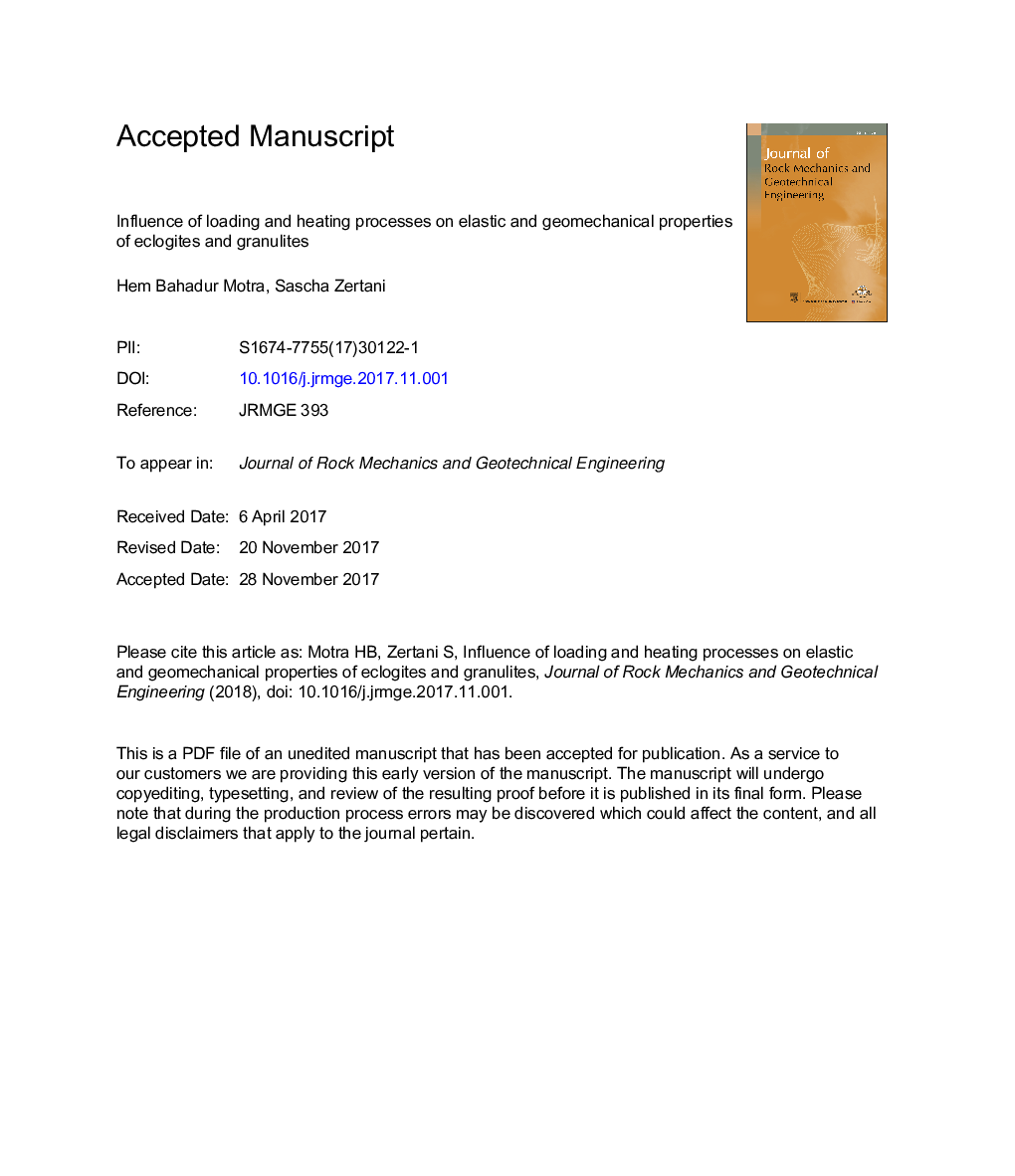| Article ID | Journal | Published Year | Pages | File Type |
|---|---|---|---|---|
| 6752402 | Journal of Rock Mechanics and Geotechnical Engineering | 2018 | 22 Pages |
Abstract
Increased knowledge of the elastic and geomechnical properties of rocks is important for numerous engineering and geoscience applications (e.g. petroleum geoscience, underground waste repositories, geothermal energy, earthquake studies, and hydrocarbon exploration). To assess the effect of pressure and temperature on seismic velocities and their anisotropy, laboratory experiments were conducted on metamorphic rocks. P- (Vp) and S-wave (Vs) velocities were determined on cubic samples of granulites and eclogites with an edge length of 43 mm in a triaxial multianvil apparatus using the ultrasonic pulse emission technique in dependence of changes in pressure and temperature. At successive isotropic pressure states up to 600 MPa and temperatures up to 600 °C, measurements were performed related to the sample coordinates given by the three principal fabric directions (x, y, z) representing the foliation (xy-plane), the normal to the foliation (z-direction), and the lineation direction (x-direction). Progressive volumetric strain was logged by the discrete piston displacements. Cumulative errors in Vp and Vs are estimated to be <1%. Microcrack closure significantly contributes to the increase in seismic velocities and decrease in anisotropies for pressures up to 200-250 MPa. Characteristic P-wave anisotropies of about 10% are obtained for eclogite and 3-4% in a strongly retrogressed eclogite as well as granulites. The wave velocities were used to calculate the geomechanical properties (e.g. density, Poisson's ratio, volumetric strain, and elastic moduli) at different pressure and temperature conditions. These results contribute to the reliable estimate of geomechanical properties of rocks.
Related Topics
Physical Sciences and Engineering
Earth and Planetary Sciences
Geotechnical Engineering and Engineering Geology
Authors
Hem Bahadur Motra, Sascha Zertani,
